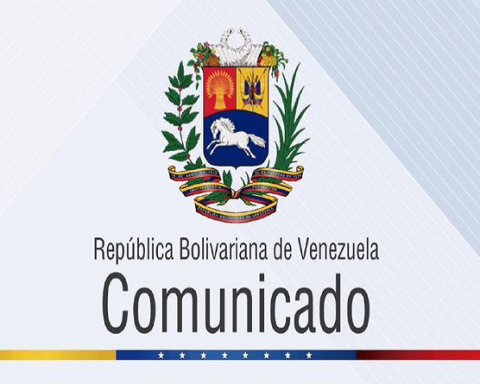The Government will carry out a survey. It is estimated that the results will be ready by mid-2022. Among the short-term policies, the delivery of a nutritional aid bonus is projected.
All governments launch campaigns to reduce child malnutrition without success. How will you achieve it?
President Guillermo Lasso set the goal of reducing chronic child malnutrition by six percentage points by 2025. One of the reasons why multiple projects previously, in past governments, were not successful was because there was no intersectoral approach (…) which is the best way to deal with a problem that is not short term.
If it is a long-term project, what are the immediate actions?
To prevent children who are born at this time (from having chronic malnutrition), the childhood with a future project was presented on November 30, 2021, to attract users early: pregnant mothers and children up to two years old and to be able to ensure that these children receive care from both the Ministry of Public Health and the Ministry of Economic and Social Inclusion (Mies)
The Childhood with a Future project aims to reach 330,000 families by 2022, with an early recruitment process and referral to the Ministries of Health, Inclusion, Education and Civil Registry.
Do you have updated data on this population? I imagine the pandemic increased the problem
The most recent data we have on chronic child malnutrition is a study carried out by the Ministry of Health in 2018. In that study, the prevalence of chronic child malnutrition was 27.2%. After that, some things have happened that have worsened this situation.
What situations?
On the one hand we have had the migration crisis that has increased the levels of poverty and extreme poverty and additionally the pandemic; it has turned out that, in the last two years, services for expectant mothers and children up to two years of age worsened.
To what levels has it worsened?
Reports from cooperation agencies say that we would be in the order of one in three children, that is, about a third of the children in our country currently have chronic child malnutrition.
And how to work without updated data?
As of this month (January) we are starting the national survey of child malnutrition, in its pilot stage, which will be carried out in the province of Morona Santiago and which will have the first results in the first quarter of this year.
Why that province?
The definition (of the province) is of a technical nature of the INEC. Once the pilot is finished, towards the end of February, the ‘enlistment’ of households will be carried out on a national scale. In other words, the zones and areas to be visited will be defined and data collection will begin towards the middle of the year.
A nutritional aid voucher has been announced. What does it consist of?
It will be aimed at mothers living in poverty and extreme poverty. It’s called the 1,000 day bonus. Its purpose is to help the nutrition of boys and girls from the first days of life, from conception to two years of age. That stage of life known as the window of opportunity is key, because between 80 and 85% of a child’s neural connections are developed.
How many will be the beneficiaries of this bonus?
We are in a development design stage in conjunction with Mies, the Ministry of Economy and Finance and in the coming weeks it will be announced by the president, Guillermo Lasso, with issues of amounts and to whom they are directed.
How to ensure that mothers invest the bonus in the nutrition of children?
It’s part of the design we’re working on. The program includes control and follow-up actions for mothers and newborn children, to ensure that prenatal check-ups are being carried out. Also that family counselors go to homes and work together with families and make sure that nutritional aid is used in the best way.
Can people who receive the human development bonus also receive the nutrition bonus?
If a mother is in one of the Mies programs, she could not receive the 1,000-day bonus. But these mothers will be able to receive information and visits from Mies educators.
The closure of children’s centers also influences poor nutrition
Mies works with nearly 2,400 child development centers nationwide. 80% work with cooperators. The services of child development centers due to the pandemic are suspended until next month, when they will review their activities. We are working with Mies and Sercop so that they can quickly make food contracts.
Part of chronic malnutrition is the lack of access to water, sewage and sanitation
This is very important. Among the decisions that the President has made is to define a special line of credit that the Development Bank of Ecuador (BDE) is going to deliver to the Decentralized Autonomous Governments (GADs), through which their credit quota for projects will be increased. of water and sanitation. This special line includes an increase in the payment term from 15 to 25 years in a reduction of the interest rate of 5%. (AVV)
The Ecuador Crece sin Malnutrición Infantil strategy has a budget of 330 million for 2022. This encompasses at least five ministries.
La Secretaría Técnica de Ecuador Crece sin Desnutrición Infantil tiene un presupuesto de 14 millones.

“Close to a third of the children in our country, currently, would suffer from chronic child malnutrition”, Erwin Ronquillo, technical secretary of Ecuador Grows without Child Malnutrition.
“We will have in the third quarter of this year (2022) the national survey of child malnutrition”, Erwin Ronquillo, technical secretary of Ecuador Grows without Child Malnutrition.


















